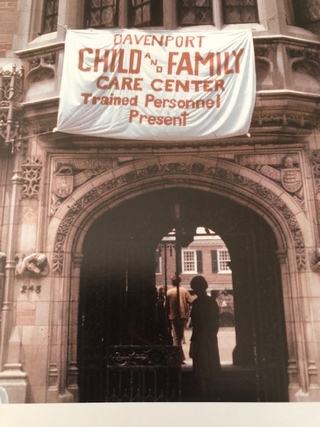Architecture
The main gate of Davenport leads from York Street into the Upper Court, at the left of which are the Dining Hall and kitchen and the Common Room. Ahead is the colonnade or cross-piece, and at the right is the main body of the undergraduate quarters.
The Dining Hall is two stories high, with a paneled interior. Centers of interest are the gallery, the two great fireplaces, and the beautifully-executed wood carving. In the middle of the room hangs an original Waterford chandelier (ca. 1790), the gift of Charles Dudley Armstrong. Adjoining the Dining Hall is the Common Room, over which is the Spitzer library.
The colonnade, parallel to the York and Park Street sides of Davenport, contains several floors of student rooms, a seminar room and the Davenport College Office. It forms a half-separation between the upper court and the smaller lower court. The latter includes a garden behind the Head’s House, which faces Park Street.
On the north side of the Upper Court is a large wing, simple in outline and so designed as to avoid the difficulties inherent in the placing of so large a building in the midst of smaller ones. It is set on a raised terrace, which cuts down its apparent height, and is reached by a curved double flight of stairs with iron balustrades. At the base of the terrace are two small buildings, resembling cottages, which contain studies for some of the non-resident Fellows and Senior student housing.
The inscription at the east end of the north terrace is the epitaph with which Cotton Mather, in his “Magnalia Christi Americana” (1702), closed the account of thelife of John Davenport. It has been freely translated:
